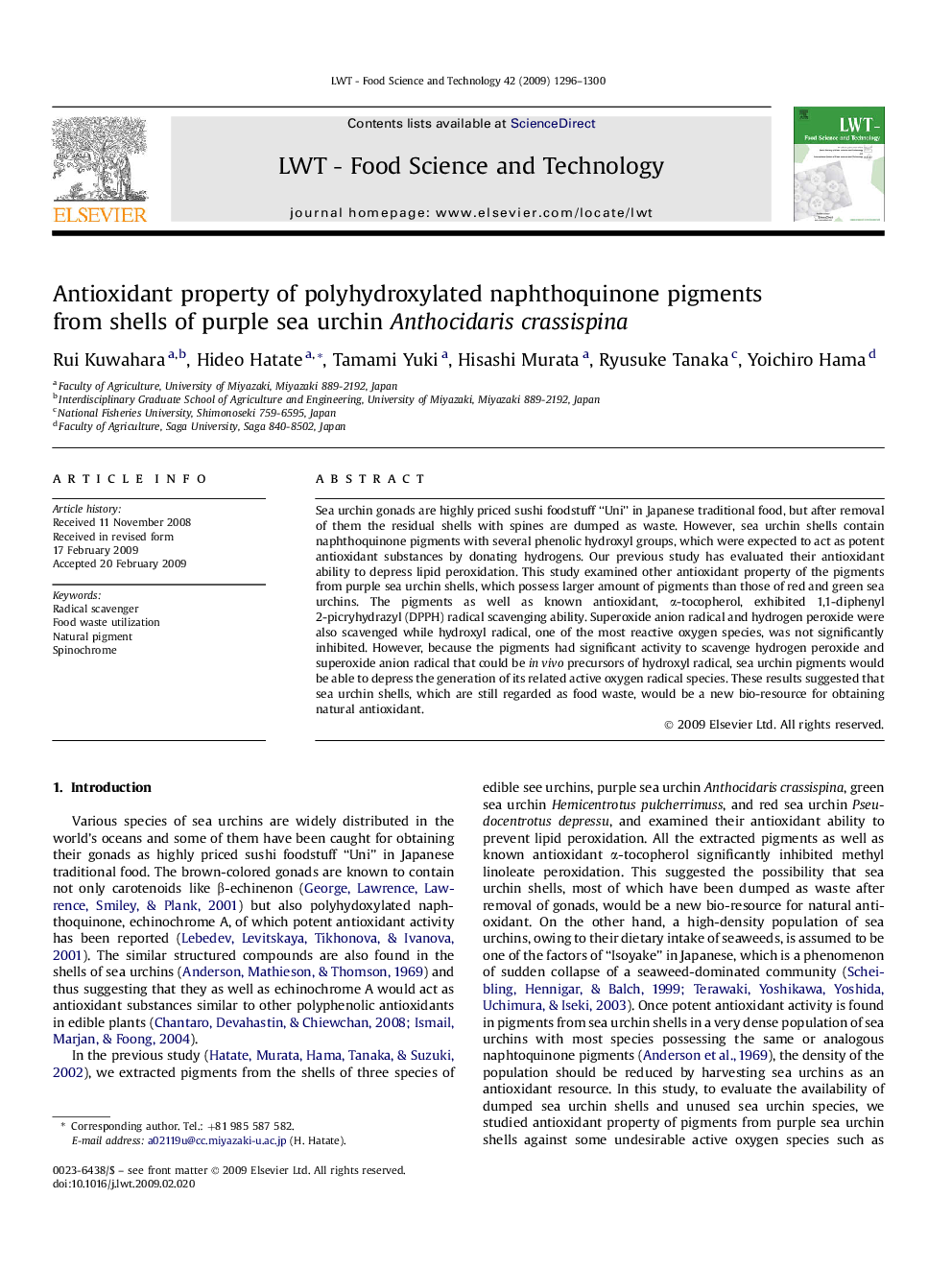| Article ID | Journal | Published Year | Pages | File Type |
|---|---|---|---|---|
| 4564815 | LWT - Food Science and Technology | 2009 | 5 Pages |
Sea urchin gonads are highly priced sushi foodstuff “Uni” in Japanese traditional food, but after removal of them the residual shells with spines are dumped as waste. However, sea urchin shells contain naphthoquinone pigments with several phenolic hydroxyl groups, which were expected to act as potent antioxidant substances by donating hydrogens. Our previous study has evaluated their antioxidant ability to depress lipid peroxidation. This study examined other antioxidant property of the pigments from purple sea urchin shells, which possess larger amount of pigments than those of red and green sea urchins. The pigments as well as known antioxidant, α-tocopherol, exhibited 1,1-diphenyl 2-picryhydrazyl (DPPH) radical scavenging ability. Superoxide anion radical and hydrogen peroxide were also scavenged while hydroxyl radical, one of the most reactive oxygen species, was not significantly inhibited. However, because the pigments had significant activity to scavenge hydrogen peroxide and superoxide anion radical that could be in vivo precursors of hydroxyl radical, sea urchin pigments would be able to depress the generation of its related active oxygen radical species. These results suggested that sea urchin shells, which are still regarded as food waste, would be a new bio-resource for obtaining natural antioxidant.
